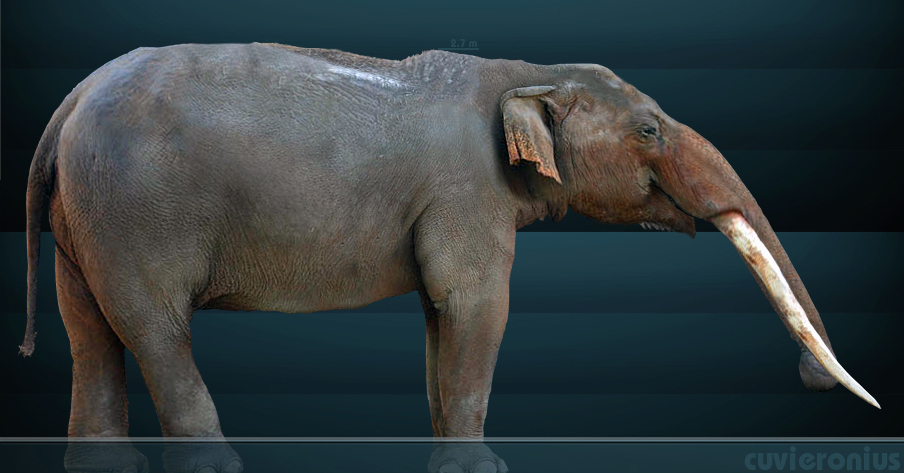|
Antonio Nariño, Bogotá
Antonio Nariño is the 15th locality of Bogotá, capital of Colombia. It is located in the central part of the city. This district is mostly inhabited by middle class residents. The locality is named after an early Colombian leader, Antonio Nariño, who is often referred to as the ''precursor'' to the presidency. General information Borders * North: Autopista Sur, Calle 8 Sur and Avenida Primera, with the localities of Puente Aranda and Los Mártires * South: Avenida Primero de Mayo, with the locality of Rafael Uribe Uribe * East: Carrera 10ª, with the locality of San Cristóbal * West: Calle 44 Sur, with the locality of Tunjuelito Hydrology The locality had several rivers that have been transformed into canals flowing into the Fucha River. It has several parks. There is one major commercial sector in the Restrepo neighborhood, with the balance of the locality consisting of residential areas with small stores and churches. Topography The topography of the locality is ma ... [...More Info...] [...Related Items...] OR: [Wikipedia] [Google] [Baidu] |
Bogotá
Bogotá (, also , , ), officially Bogotá, Distrito Capital, abbreviated Bogotá, D.C., and formerly known as Santa Fe de Bogotá (; ) during the Spanish period and between 1991 and 2000, is the capital city of Colombia, and one of the largest cities in the world. The city is administered as the Capital District, as well as the capital of, though not part of, the surrounding department of Cundinamarca. Bogotá is a territorial entity of the first order, with the same administrative status as the departments of Colombia. It is the political, economic, administrative, and industrial center of the country. Bogotá was founded as the capital of the New Kingdom of Granada on 6 August 1538 by Spanish conquistador Gonzalo Jiménez de Quesada after a harsh expedition into the Andes conquering the Muisca, the indigenous inhabitants of the Altiplano. Santafé (its name after 1540) became the seat of the government of the Spanish Royal Audiencia of the New Kingdom of Granada (cre ... [...More Info...] [...Related Items...] OR: [Wikipedia] [Google] [Baidu] |
Fucha River
The Fucha River is a river on the Bogotá savanna and a left tributary of the Bogotá River. The river originates in the Eastern Hills of the Colombian capital Bogotá and flows westward through the city into the Bogotá River. It is one of the three important rivers of the city, together with the Tunjuelo and Juan Amarillo Rivers. Etymology Fucha is derived from Muysccubun, the indigenous language of the Muisca, who inhabited the Bogotá savanna before the Spanish conquest and means "her" or "female".''fucha'' - Muisccubun Dictionary Description The Fucha River originates in the locality San Cristóbal in the ...[...More Info...] [...Related Items...] OR: [Wikipedia] [Google] [Baidu] |
Spanish Conquest Of The Muisca
The Spanish conquest of the Muisca took place from 1537 to 1540. The Muisca were the inhabitants of the central Andean highlands of Colombia before the arrival of the Spanish conquistadors. They were organised in a loose confederation of different rulers; the '' psihipqua'' of Muyquytá, with his headquarters in Funza, the '' hoa'' of Hunza, the ''iraca'' of the sacred City of the Sun Sugamuxi, the Tundama of Tundama, and several other independent ''caciques''. The most important rulers at the time of the conquest were ''psihipqua'' Tisquesusa, ''hoa'' Eucaneme, ''iraca'' Sugamuxi and Tundama in the northernmost portion of their territories. The Muisca were organised in small communities of circular enclosures (''ca'' in their language Muysccubbun; literally "language of the people"), with a central square where the '' bohío'' of the ''cacique'' was located. They were called "Salt People" because of their extraction of salt in various locations throughout their territories, ma ... [...More Info...] [...Related Items...] OR: [Wikipedia] [Google] [Baidu] |
Muisca Confederation
The Muisca Confederation was a loose confederation of different Muisca rulers (''zaques'', ''zipas'', '' iraca'', and ''tundama'') in the central Andean highlands of present-day Colombia before the Spanish conquest of northern South America. The area, presently called Altiplano Cundiboyacense, comprised the current departments of Boyacá, Cundinamarca and minor parts of Santander. According to some Muisca scholars the Muisca Confederation was one of the best-organized confederations of tribes on the South American continent. Modern anthropologists, such as Jorge Gamboa Mendoza, attribute the present-day knowledge about the confederation and its organization more to a reflection by Spanish chroniclers who predominantly wrote about it a century or more after the Muisca were conquered and proposed the idea of a loose collection of different people with slightly different languages and backgrounds.Gamboa Mendoza, 2016 Geography Climate Muisca Confederation In the time ... [...More Info...] [...Related Items...] OR: [Wikipedia] [Google] [Baidu] |
Bacatá
Bacatá is the name given to the main settlement of the Muisca Confederation on the Bogotá savanna. It mostly refers to an area, rather than an individual village, although the name is also found in texts referring to the modern settlement of Funza, in the centre of the savanna. Bacatá, alternatively written as Muequetá or Muyquytá, was the main seat of the ''zipa'', the ruler of the Bogotá savanna and adjacent areas. The name of the Colombian capital, Bogotá, is derived from Bacatá, but founded as Santafe de Bogotá in the western foothills of the Eastern Hills, Bogotá, Eastern Hills in a different location than the original settlement Bacatá, west of the Bogotá River, eventually named after Bacatá as well. The word is a combination of the Chibcha language, Chibcha words ''bac'', ''ca'' and ''tá'', and means "(enclosure) outside the farmfields", referring to the rich Muisca agriculture, agricultural lands of the Sabana Formation on the Bogotá savanna. Bacatá was sub ... [...More Info...] [...Related Items...] OR: [Wikipedia] [Google] [Baidu] |
Fucha (TransMilenio)
The simple station Fucha is part of the TransMilenio mass-transit system of Bogotá, Colombia, opened in the year 2000. Etymology The station is named Fucha due to its proximity to the channel of the Fucha River, which runs along Calle 13 Sur. Fucha means "her" or "female" in Muysccubun, the language of the indigenous Muisca who inhabited the Bogotá savanna before the Spanish conquest.''fucha'' - Muysccubun Dictionary Location The station is located in southern Bogotá, specifically on , with Calles 17 and 18A sur. It serves the Ciudad Jardín and Restrepo neighborhoods.History At the beginning of 2001, the second phase of the Caracas lin ...[...More Info...] [...Related Items...] OR: [Wikipedia] [Google] [Baidu] |
Restrepo (TransMilenio)
The simple station Restrepo is part of the TransMilenio mass-transit system of Bogotá, Colombia, opened in the year 2000. Location The station is located in southern Bogotá, specifically on Avenida Caracas with Calles 19 and 22 sur. It serves the Olaya, San José, and Ciudad Jardín Sur neighborhoods. History At the beginning of 2001, the second phase of the Caracas line of the system was opened from Tercer Milenio to the intermediate station Calle 40 Sur. A few months later, service was extended south to Portal de Usme. The station is named Restrepo due to its proximity to an area of that name located to the west of the station. Station Services Old trunk services Main line service Feeder Service There is no feeder service here. Inter-City Service There is no Inter-City service See also *Bogotá Bogotá (, also , , ), officially Bogotá, Distrito Capital, abbreviated Bogotá, D.C., and formerly known as Santa Fe de Bogotá (; ) during the Spanish period an ... [...More Info...] [...Related Items...] OR: [Wikipedia] [Google] [Baidu] |
Avenida Caracas
Avenida Caracas is an arterial road in Bogotá, Colombia that runs through the city from north to south. Names The road has four names along its stretch: ''Avenida Caracas'', ''Troncal Caracas'', ''Carrera 14'', and ''Carretera a Usme''. Route The road begins in the southern ward of Usme, where it is named Carretera a Usme. It runs north to Calle 70 Sur. It continues north to the Portal de Usme, where it is known as the Troncal Caracas. It continues through the neighborhoods Ciudad Bolívar, Rafael Uribe Uribe, Antonio Nariño, Los Mártires, Santa Fe and Chapinero, until Calle 80 near the monument Los Héroes. It continues north to Chía with the name Autopista Norte. Points of interest on the route * The TransMilenio TransMilenio is a bus rapid transit (BRT) system that serves Bogotá, the capital of Colombia, and Soacha. The system opened to the public in December 2000, covering Avenida Caracas, Caracas Avenue and 80 street. Other lines were added gradually .. ... [...More Info...] [...Related Items...] OR: [Wikipedia] [Google] [Baidu] |
TransMilenio
TransMilenio is a bus rapid transit (BRT) system that serves Bogotá, the capital of Colombia, and Soacha. The system opened to the public in December 2000, covering Avenida Caracas, Caracas Avenue and 80 street. Other lines were added gradually over the next several years, and as of 2022, 12 lines totalling run throughout the city. It is part of the city's Integrated Public Transport System (Bogotá), Integrated Public Transport System (''Sistema Integrado de Transporte Público'' [SITP] in Spanish), along with the urban, complementary and special bus services operating on neighbourhoods and main streets. It was inspired by Curitiba's ''Rede Integrada de Transporte'' (Integrated Transportation Network). TransMilenio consists of several interconnected BRT lines, with raised floor stations in the center of a main avenue, or "''troncal''". Passengers typically reach the stations via a bridge over the street. Usually four lanes down the center of the street are dedicated to bus ... [...More Info...] [...Related Items...] OR: [Wikipedia] [Google] [Baidu] |
Bogotá Savanna
The Bogotá savanna is a montane savanna, located in the southwestern part of the Altiplano Cundiboyacense in the center of Colombia. The Bogotá savanna has an extent of and an average altitude of . The savanna is situated in the Eastern Ranges of the Colombian Andes. The Bogotá savanna is crossed from northeast to southwest by the long Bogotá River, which at the southwestern edge of the plateau forms the Tequendama Falls (''Salto del Tequendama''). Other rivers, such as the Subachoque, Bojacá, Fucha, Soacha and Tunjuelo Rivers, tributaries of the Bogotá River, form smaller valleys with very fertile soils dedicated to agriculture and cattle-breeding. Before the Spanish conquest of the Bogotá savanna, the area was inhabited by the indigenous Muisca, who formed a loose confederation of various ''caciques'', named the Muisca Confederation. The Bogotá savanna, known as ''Muyquytá'', was ruled by the ''zipa''. The people specialised in agriculture, the mining of emeralds ... [...More Info...] [...Related Items...] OR: [Wikipedia] [Google] [Baidu] |
Tunjuelito
Tunjuelito is the 6th locality of the Capital District of the Colombian capital, Bogotá. Tunjuelito is located in the south of Bogotá, bordering to the north with the localities of Bosa, Kennedy and Puente Aranda, to the east with the localities of Rafael Uribe Uribe and Usme, to the south with Usme and to the west with Ciudad Bolívar. This district is mostly inhabited by working and lower class residents. Etymology The locality is named Tunjuelito as a diminutive form of ''tunjo'', the votive figures of the indigenous Muisca. Points of interest The locality hosts Parque El Tunal and the Biblioteca El Tunal, part of Biblored's network of libraries. Neighborhoods Tunjuelito, El Tunal, San Benito, San Vicente Ferrer, Fátima, El Carmen, San Carlos, Muzú, Venecia, Isla del Sol and La Sevillana. Transportation The main entrance to Tunjuelito is through the Avenida Caracas and the Avenida Ciudad de Villavicencio, which is also served by a TransMilenio TransMi ... [...More Info...] [...Related Items...] OR: [Wikipedia] [Google] [Baidu] |








